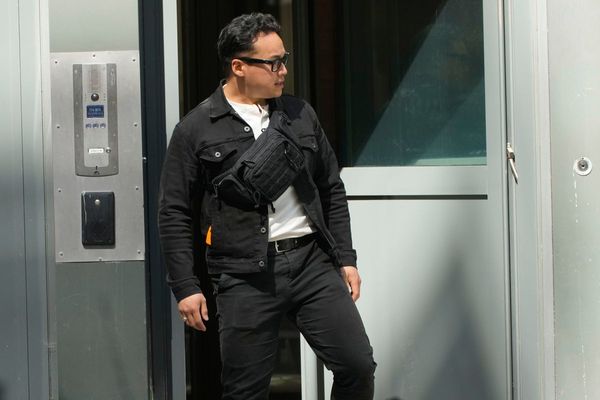In recent years, advancements in artificial intelligence have led to some fascinating developments, including the creation of AI doppelgangers. These virtual replicas are crafted using sophisticated algorithms that analyze and mimic real people's voices, appearances, and behaviors. While the concept might sound like science fiction, AI doppelgangers are rapidly becoming a reality, with applications in entertainment, customer service, and even personal use. As AI technology evolves, it raises exciting possibilities and critical ethical questions.
The rise of AI counterparts can be attributed to improvements in machine learning and deep learning technologies. These technologies allow AI systems to process and learn from vast amounts of data, thereby creating highly accurate simulations of human behavior. For example, companies like Synthesia and Replika use AI to generate lifelike avatars and conversational agents. These replicas can hold conversations, provide customer support, or serve as digital companions. The entertainment industry has also embraced AI doppelgangers, using them to recreate actors for movies or to bring historical figures to life in documentaries.
One significant application of AI-generated look-alikes is in customer service. Businesses are increasingly using AI avatars to interact with customers online. These virtual assistants can handle inquiries, support, and even resolve issues without human intervention. This not only enhances efficiency but also allows companies to provide 24/7 service. AI doppelgangers can be programmed to exhibit specific personality traits, making interactions more personal and engaging. However, this also raises concerns about job displacement and the need to balance human and AI interactions in customer service roles.
In personal use, AI doppelgangers are finding a place as digital companions. Apps like Replika allow users to create their own AI friend, designed to converse and interact like a human companion. These AI friends can provide emotional support, help with anxiety, or simply be there for a chat. While this can benefit individuals who feel lonely or isolated, it also questions the impact on human relationships and social interactions. The idea of relying on an AI for companionship might seem unsettling to some, but it represents a valuable tool for the emotional well-being of others.
The entertainment industry is another area where AI doppelgangers are making waves. Studios are using AI to create digital replicas of actors, allowing them to appear in films long after they have retired or even passed away. This technology was notably used to bring back Carrie Fisher as Princess Leia in the recent Star Wars films. Fisher, who passed away in 2016, was digitally recreated to complete her character’s storyline in "Star Wars: The Rise of Skywalker." The process involved using archived footage, body doubles, and sophisticated CGI to create a seamless performance that honored Fisher's legacy while providing closure for fans.
Moreover, AI doppelgangers are being used to de-age actors, allowing them to portray younger versions of themselves. This technique was employed in Martin Scorsese's "The Irishman," where Robert De Niro, Al Pacino, and Joe Pesci were digitally de-aged to portray their characters at various stages of their lives. The technology allowed the actors to perform without requiring extensive makeup or younger stand-ins, creating a more authentic and immersive experience for the audience.
These advancements in AI and digital effects open up new possibilities for storytelling in the entertainment industry. Directors and writers are no longer constrained by the age or availability of actors, enabling them to craft narratives that span decades or feature beloved characters who might otherwise be absent from the screen. This can lead to more dynamic and engaging stories and opportunities to revisit classic films and franchises with the original cast, regardless of the actors' current age or status.
However, using AI doppelgangers in entertainment raises significant ethical questions about consent and using someone's likeness. When an actor has passed away, who has the right to decide if their image can be used in new projects? The debate over digital resurrection often involves the actors' estates, studios, and legal representatives. For instance, the portrayal of Peter Cushing as Grand Moff Tarkin in "Rogue One: A Star Wars Story" sparked controversy, as Cushing had been deceased since 1994. While his estate granted permission, many questioned whether bringing an actor back to life digitally was appropriate.
Furthermore, de-aging actors and creating AI doppelgangers raise concerns about the boundaries of authenticity and artistic integrity. These technologies can undermine the craft of acting, as AI might heavily alter or generate performances. This can blur the line between human creativity and technological manipulation, leading to debates about the trustworthy source of performance.
There are also potential implications for the careers of living actors. If studios can digitally recreate or de-age actors, there might be less demand for younger talent or new faces. This could limit opportunities for emerging actors and potentially stifle diversity and innovation in casting. Additionally, the reliance on AI-generated performances might impact how actors negotiate contracts and protect their likeness rights, necessitating new legal frameworks and agreements.
As AI doppelgangers become more sophisticated and prevalent, the entertainment industry must carefully navigate these ethical and practical challenges. Establishing clear guidelines for using digital likenesses, ensuring actors' consent, and respecting their legacies are crucial steps in maintaining trust and integrity within the industry. Balancing technological advancements with preserving the human element at storytelling's heart is also essential.
In conclusion, while AI doppelgangers offer exciting possibilities for the entertainment industry, they also introduce complex ethical and professional considerations. As technology evolves, addressing these challenges thoughtfully and transparently is imperative. By doing so, the industry can harness the benefits of AI while safeguarding the rights and contributions of the actors who bring stories to life.
Ethical considerations must also be addressed. Privacy, consent, and the potential for misuse are at the forefront of the discussion. For instance, creating an AI replica of someone without permission can lead to significant privacy violations. There are also concerns about the deepfake phenomenon, where AI-generated images or videos are used to spread misinformation or defame individuals. Establishing clear guidelines and regulations ensures that AI doppelgangers are used responsibly and ethically.
AI doppelgangers are a fascinating development in artificial intelligence, offering a glimpse into a future where virtual replicas play a significant role in various aspects of our lives. The applications are vast and varied, from customer service to personal companionship and entertainment. However, with these advancements come essential ethical and societal considerations that must be addressed. As we continue to explore the potential of AI counterparts, it is necessary to strike a balance between innovation and responsibility, ensuring that this technology benefits society while safeguarding individual rights and privacy.







